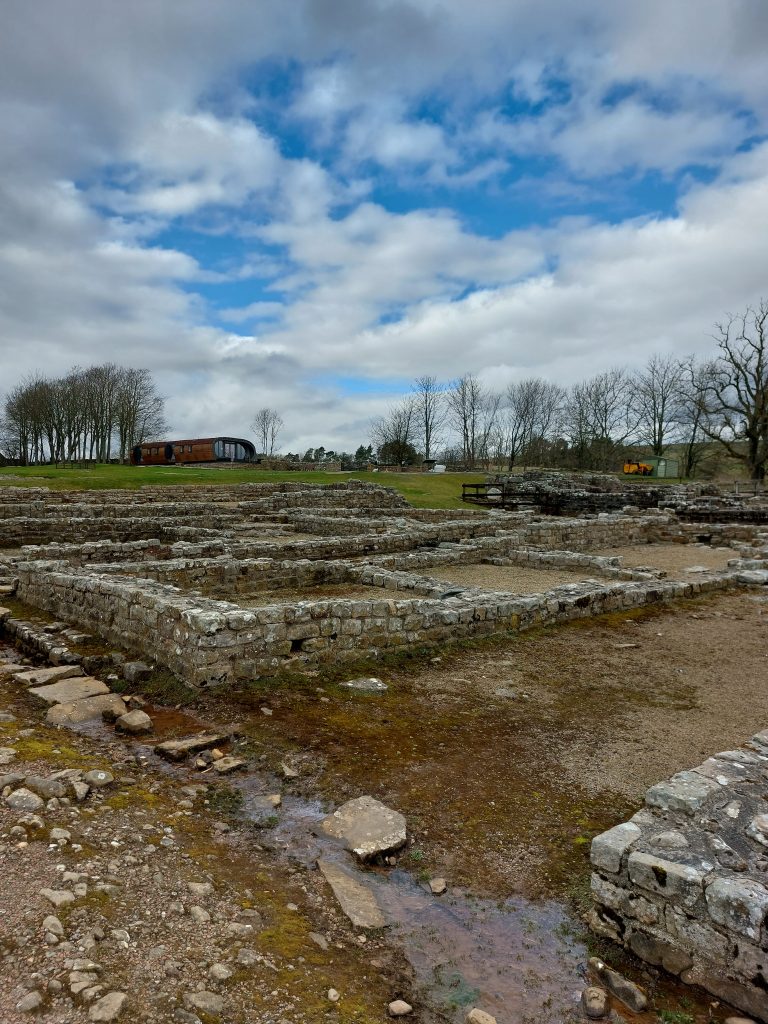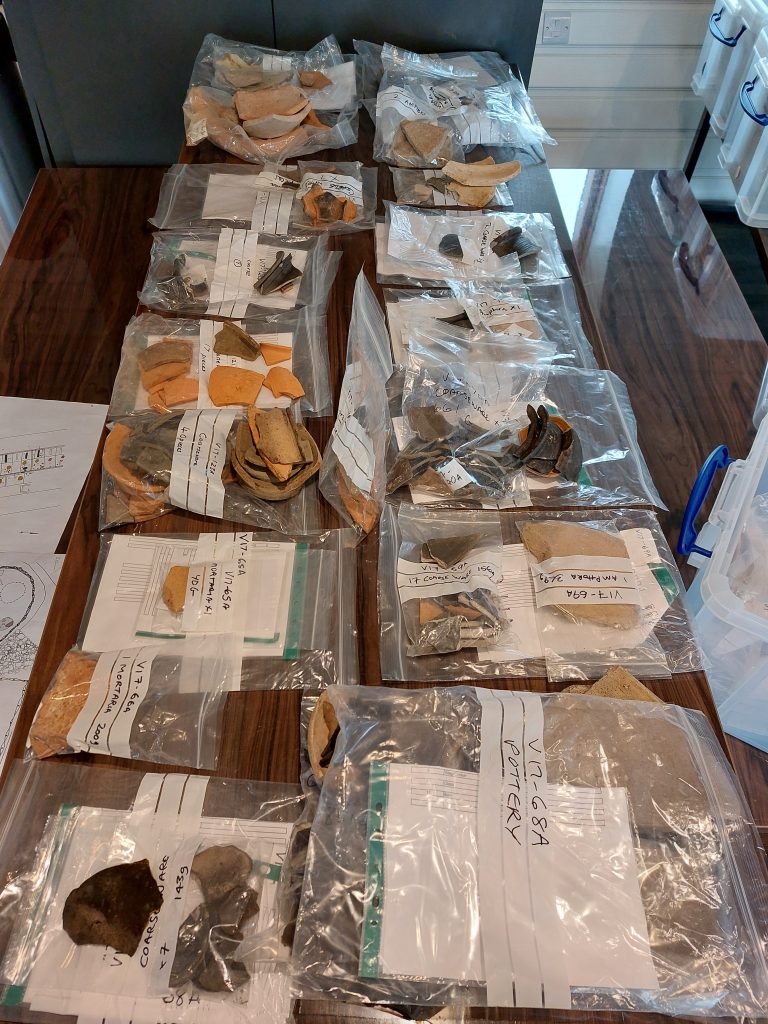
Earlier in (March) 2022, Martin and Lucy were kindly hosted by the Vindolanda Trust for a trip to collect pottery samples for organic residue analysis. The aim of our visit was to gather enough pottery sherds from different kinds of pottery vessel (e.g. jars, dishes and bowls) from different archaeological contexts, so that our technician (Rob) would be able to get started on grinding up samples for analysis later in the year. As the first of two planned trips to Vindolanda, this time our focus was on pottery from the period IV site, c. 105-120 CE. Of particular interest was material from the 2017 excavations of barracks associated with Varduli cavalrymen, hailing from N. Spain. We hope the residue analysis of this material will make an interesting contrast with pottery sherds taken from the 2013 excavations of extramural roundhouse and adjacent rectilinear building, likely associated with civilian members of the wider Vindolanda community in the same period of the early second century CE.

After a busy couple of days looking at, photographing, bagging, labelling, and logging sherds in a spreadsheet, we managed to hit our target and gather a total of 150 sherds to take back to Bristol – a big success for our first sampling trip!
Just from looking at the pottery, it was striking how different the material from the barracks is from that from the extramural site. Whereas the extramural site assemblage is dominated by utilitarian cooking jars more or less typical of Roman period sites in Britain, the cavalry barrack assemblage has a lot more specialist vessels, such as bowls, dishes and mortaria (grinding bowls). Roman pottery experts tend to assume that the more specialist shapes of pottery were involved in more elaborate ways of eating and drinking, which might reflect styles of consumption imported to Britain from other parts of the Roman world. For example, pottery plates and dishes for displaying and serving food for individuals at the dining table are very rare in Britain until the Roman period, with the change implying that new foods and ways of eating had been introduced. However, the link between the design and shape of pots and their culinary use has rarely been verified by scientific analyses. Our project will seek to change this situation, by conducting high-resolution analysis of the surviving food residues on the pots in question. We will post updates on this site when the first results are available!